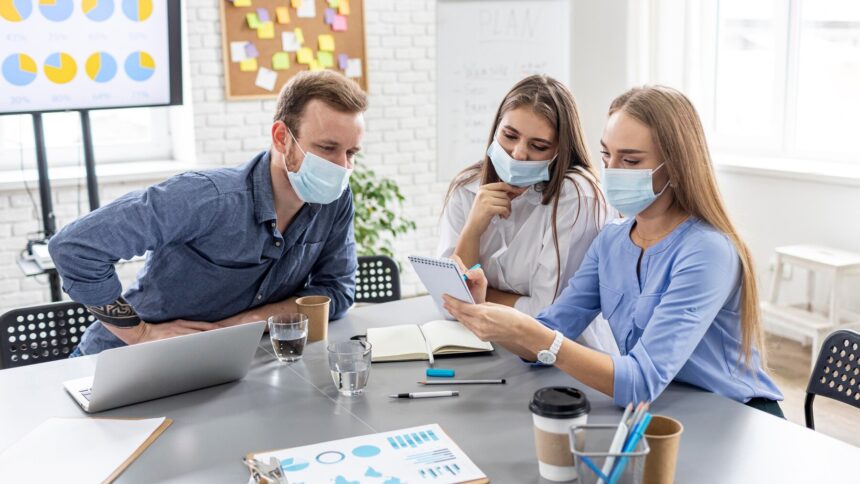Many private medical practices have re-opened since the beginning of the COVID-19 pandemic and are adhering to the safety guidance set forth by the Centers for Disease Control (CDC), OSHA, and the U.S. Department of Health and Human Services (HHS). In addition to these guidelines, below are some COVID-19 safety recommendations for medical practices providing patient care in their offices.
Safety Tips for Practices:
- Provide refresher safety training for medical staff on triage, infection control, use of personal protective equipment (PPE), and patient communication.
- Follow safety guidelines from the Centers for Disease Control and Prevention (CDC) for COVID-19 screening patients.
- Schedule in-person visits according to medical priority. Consider continued telehealth visits for patients at high risk for COVID-19 who don’t need to be seen in person.
- Practices should require all individuals who visit the office to wear a cloth face covering. This expectation should be clearly explained to patients and other visitors before they arrive at the practice.
- Avoid patient-to-patient contact by closing waiting rooms. Consider a separate entrance and exit door. Ask patients to wait in the car, and they will receive a text when a patient room is available. Allow only one-patient visits. If a patient must be accompanied, screen for COVID-19.
- Heavy emphasis should be placed on deep cleaning all physician office waiting rooms, patient rooms, frequently touched surfaces including reception countertops, check-in equipment and areas, chairs, elevator buttons, doorknobs, railings, and restrooms. Consider removing all reading materials from the waiting room.
- Consider the implementation of telehealth services. Patients with COVID-19 could be evaluated remotely and if found seriously ill, could be referred to the emergency department with prior notification of their arrival.
- Post the practice’s policy for non-employees or patients outside the practice door and on your website. (including vendors, educators, service providers, etc.) Consider rerouting these visitors to phone or video conferences. For visitors who must enter the practice, designate a specific time to minimize potential interactions with patients and staff.
- Determine the needs of staff for PPE based on levels of the types of patients they are seeing, the types of care and procedures performed, and infection in the community. Use the guidance from the Occupational Safety and Health Administration (OSHA). Also see the CDC guidelines
- Contact your medical malpractice insurance carrier to ensure that you are protected from medical malpractice litigation. It is a good idea to discuss your current coverage and whether any additional coverage may be warranted.

Leave a Reply
You must be logged in to post a comment.